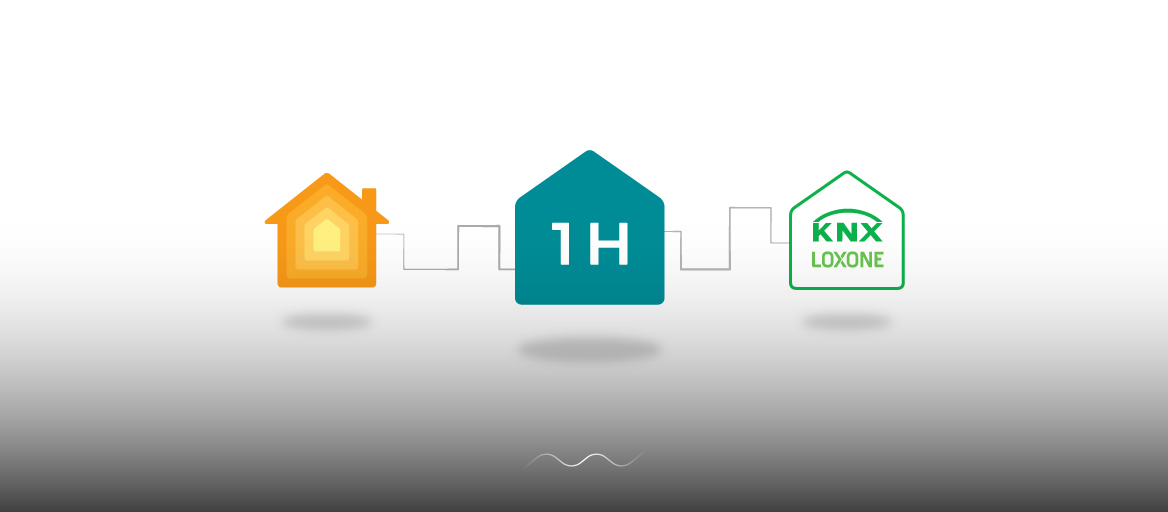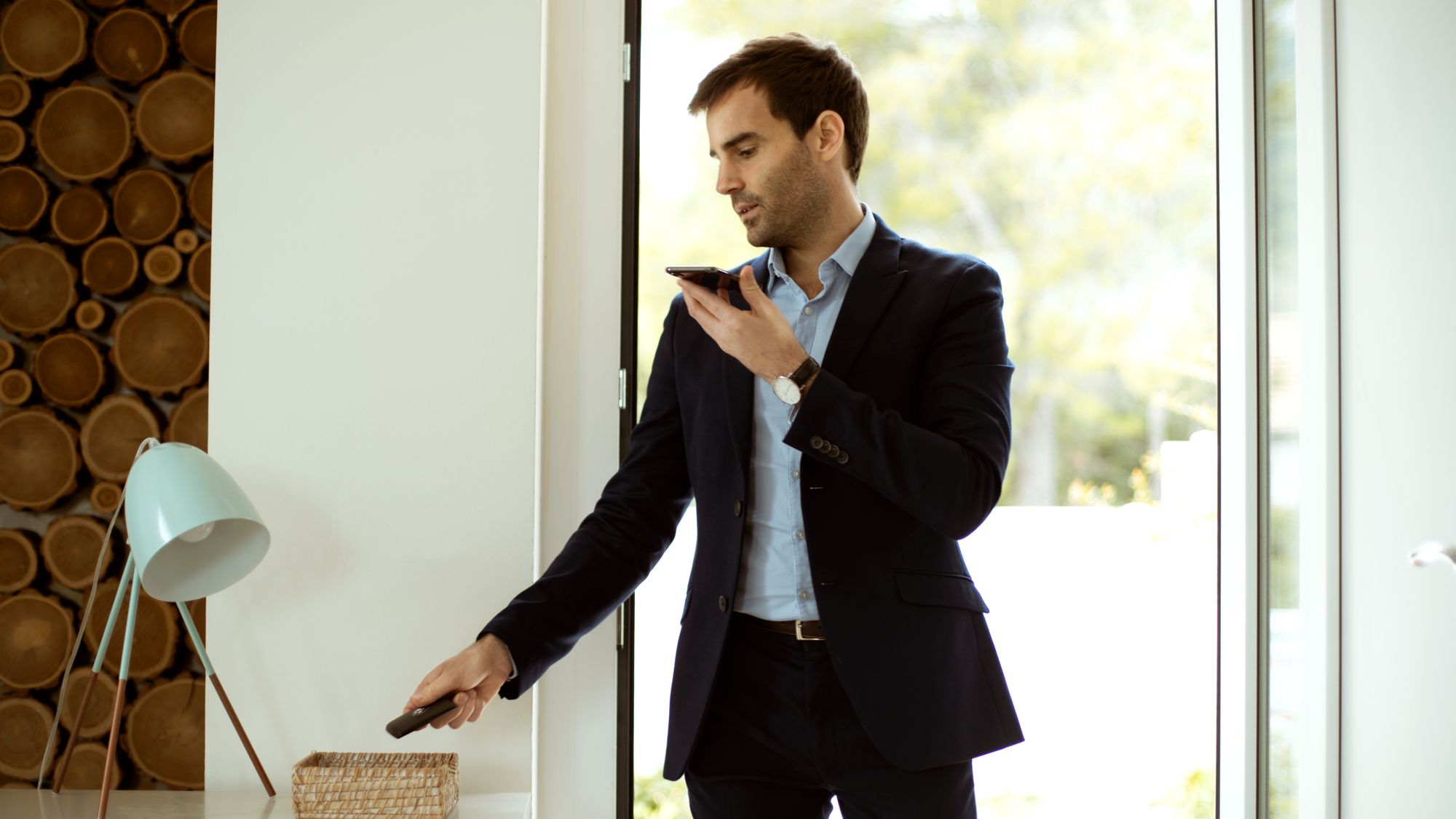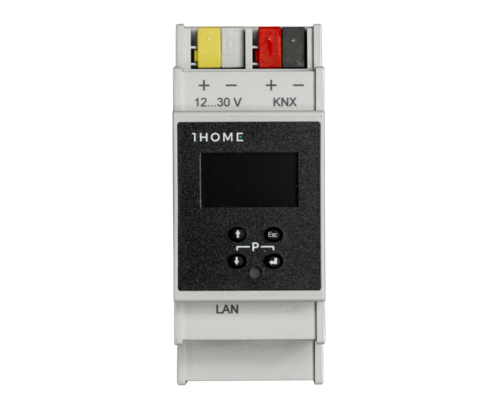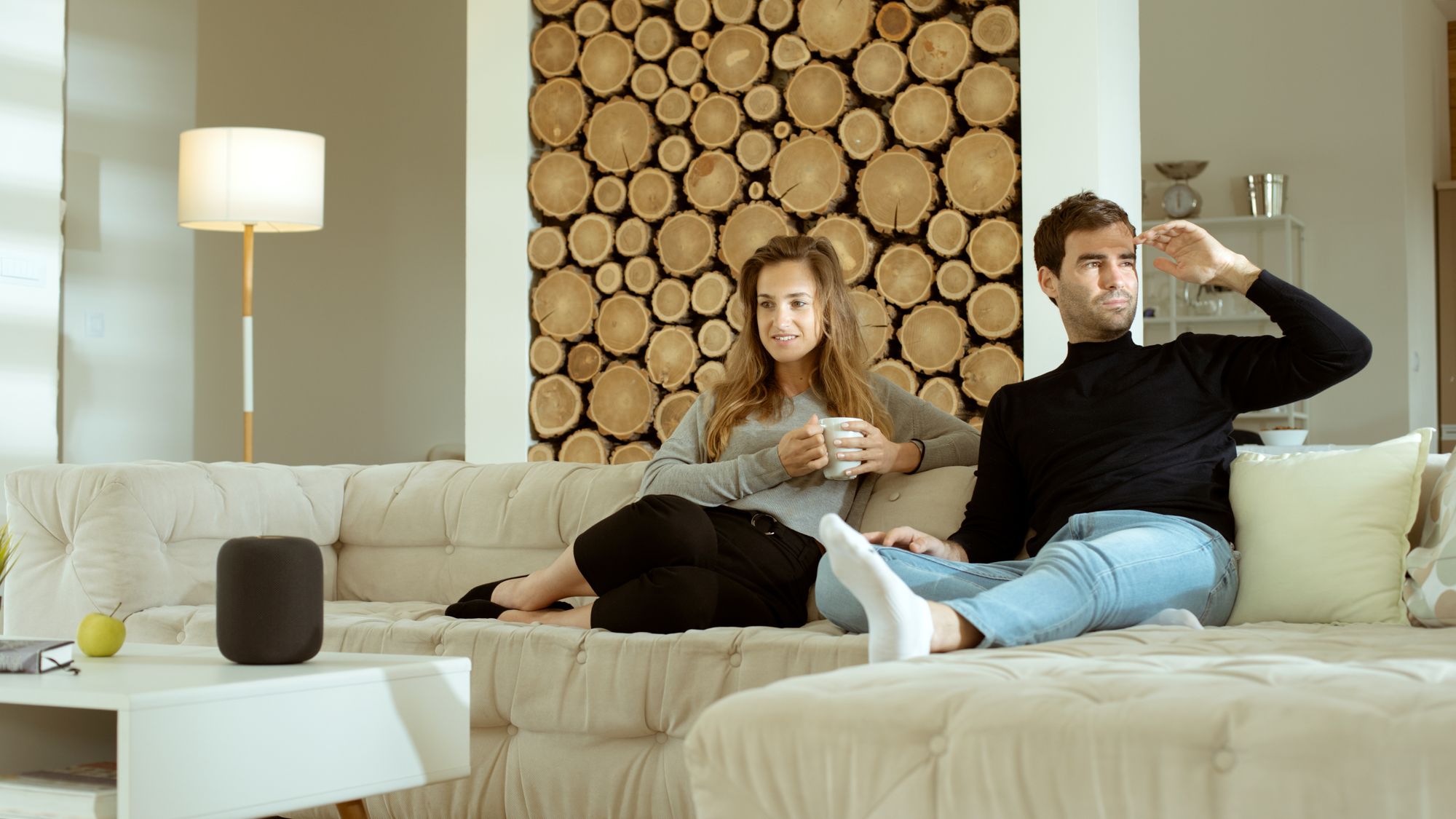
This article will benefit you either if you’re building a new house and considering a smart home, if you’re already living in a Loxone/KNX home, or if you’re a professional Loxone/KNX integrator.
Try Apple integration in your KNX or Loxone smart home with our solution, read more here: 1home.io
Select your smart home status:
- I’m building a new house and considering a smart home
- I already live in a KNX/Loxone smart home
- I’m a professional KNX/Loxone smart home integrator
1. I’m building a new house and considering a smart home
If you’re building a new house or going through a thorough renovation of an old one, then it’s a perfect opportunity for you to decide for a wired smart home base. Since you’ll be in the middle of serious infrastructure work, adding some cables to the walls will be a piece of cake.
Deciding for a wired smart home (KNX or Loxone) backbone at this point is definitely the way to go, especially if you’re contemplating a complete smart home solution opposed to adding a few lights and music speakers.
Here is why:
1. It's gonna last a generation
KNX is a robust infrastructure system that will last 20+ years. Coming from an industrial angle, these systems are meant for large installations with extreme attention to reliability and stability. Since KNX is a standard, there’s also no need to worry if your manufacturer stops their operations, that your system would stop working. After all, you can always choose an alternative product from a different manufacturer based on the same standard.
2. It always works
As opposed to trending wireless alternatives, all your KNX devices will work without connection to the internet, giving you a safe internal net that will allow you to adapt heating, lightning blinds and ventilation via a push-button on the wall. No latency in execution as it happens with wireless devices and appliances. There are also no issues with router configuration or network problems because the whole system works completely offline.
3. Heating/cooling, lights, blinds and ventilation are considered infrastructure and you should keep it that way
You’ll be able to choose from a variety of manufacturers all working on the KNX protocol, all providing robust hardware for controlling your heating, blinds, lights and ventilation. Those are the most important devices in your home and you want the core to always work—for years.
So, we have concluded that you really want KNX as a base of your smart home infrastructure.
Now let’s explain why you’d want to connect it with Apple HomeKit:
1. Single mobile app for all your KNX devices and wireless accessories
During the lifetime of your KNX smart home you will probably buy some wireless devices. This is simply because almost any device you buy today is Wi-Fi connected and it’s hard not to. Apple Home app will let you integrate them all together with your existing KNX devices. This way you’ll never have to open more than one mobile app for controlling your home. When you are in the researching/building phase of a KNX smart home you will find out that some devices are extremely and unnecessarily expensive (Intercoms, security cameras, locks etc.), with Apple HomeKit you’ll be able to swap those devices with wireless ones at a third of the price.
2. Innovative ways of interaction
Apple HomeKit will enable you to use Siri voice control and Apple’s geofencing (location-based automation) on top of controlling and querying the status of all your KNX and wireless devices.
3. Autonomy in adapting your home
You won’t be able to change much in KNX if you don’t learn to program ETS (a tool for configuring KNX actors and gateways) or pay high fees to your service provider to adapt devices for you. With the Apple Home app you can easily adapt your scenes or create new automations yourself, all that due to a friendly automation dashboard.
Conclusion:
KNX will guarantee your smart home to last 20+ years and Apple HomeKit will guarantee for it to remain smart during that time.

KNX to Apple HomeKit integration is running on the new 1Home Bridge device (KNX and Apple certified).

2. I already live in a KNX/Loxone smart home
If you live in a KNX/Loxone smart home, then you're already familiar with all the benefits of having a stable smart home base. But you also understand the pain.
Here are the main perks of Apple HomeKit for your smart home:
1. Siri voice control
Use voice control for all of your devices; create scenes that include both your wired (KNX/Loxone) and wireless (music speakers, intercoms, locks, security cameras etc.) devices
2. Geofencing
Use your location to automate your home. Let your gates open automatically as you’re approaching the driveway, or turn your heating on, while on your way home from the evening run.
3. Siri and Geofencing are sexy, but if you’re willing to switch your smart home visualisation to Apple, then you’re really ready for the next step in your smart home experience. Here is why:
- Single Mobile app
Once you shift your visualisation to Apple, the first thing you’ll notice is that you’ll finally be able to see all your wired (KNX/Loxone) and wireless devices in a single mobile app without complex integration processes and buying new hardware. Also secure remote access to your smart home server is supported off the shelf in the Apple Home app so you can control or check the device status from anywhere. - Automations
Apple Home app includes a very friendly dashboard where you can set up new scenes and automations without opening up Loxone Config or KNX ETS. You can set up automation across your wireless and wired devices in seconds. You can also include different triggers for automations, from sensors, alarms, time and even your location. All these automations will run 100% locally provided that you have an Apple hub inside the home in the form of an iPad, HomePod or an Apple TV. Simply adapt your floor heating to turn on when you wake up and automatically turn of once you’ve left the home. - HomeKit Secure Video
Apple has made the next step in terms of connecting security cameras and intercoms with their app. At the moment they’re presenting this functionality with the Logitech Circle 2 camera, but announcing new devices to join in supporting this functionality - it enables you to securely stream video inside your Apple Home app.
Conclusion:
Apart from voice control and geofencing, which are features that really make a home fun to live in, the Apple Home app will make your smart home life much more dynamic. Add new devices, adapt your automations, stream security cameras and intercom securely into your smart home app, and more!

3. I’m a professional KNX/Loxone smart home integrator
As a smart home integrator you should be getting many requests for Siri voice control and other Apple HomeKit functionalities but this is nowhere near the only reason why 1Home Bridge is a great option for you.
Here is why:
1. Customers can adapt simple automations themselves
Your customers can use the Apple Home app to adapt simple automations through Apple’s friendly automation dashboard. They can set up automations based on timers, sensors, alarms and location. You can then forget about the time-consuming after sales work and focus on closing new projects.
2. Customers can integrate wireless devices into the Apple Home app
Forget about custom integrations that always generate new time-consuming support tickets. Your customers can now integrate wireless devices together with their KNX/Loxone devices in the Apple Home app themselves. Using one mobile app across all their systems.
3. Secure remote access is included in the Apple Home app
Secure remote connection outside of your home’s network is supported off the shelf with Apple HomeKit.
4. Integrated KNX IP Interface
To manage the KNX installation remotely you’d normally need to convince your customer to purchase another hardware product. With 1Home KNX Bridge you get both combined in one device.
5. Secure remote access via ETS is supported on the 1Home KNX Bridge
Apart from the end-customer functionality via Apple HomeKit, the 1Home Bridge is equipped with a secure remote connection feature which allows you to program KNX devices remotely in a secure way. This way you can adapt certain functions or run diagnostics from home, no need for an on-site visit.
6. Seamless setup
The Bridge will automatically read configuration from the Loxone Miniserver or in case of KNX, automatically detect configuration from the ETS project file. This will minimise the effort needed for the setup and make your offer more competitive than other products on the market.

We hope that this article has helped you with your research and understanding of Apple HomeKit and how it can enhance your KNX smart home. At the end the decision is yours to make what kind of home you and your family will live in for the next 20+ years.
To give you an idea of the device and language scope, here’s a video of one of our users controlling his swimming pool cover, irrigation system and other KNX devices in the garden in Dutch language:
If you have any additional questions related to the 1Home Bridge and how it upgrades your existing smart home, our support team will be happy to answer them at support@1home.io.
FAQ
🇬🇧Full commands list for Apple Siri in a KNX or Loxone smart home
🇫🇷French commands for Apple Siri in a KNX or Loxone smart home
🇩🇪German commands for Apple Siri in a KNX or Loxone smart home
Set up geofencing with Apple HomeKit
How to share HomeKit access with your family?
What is Apple HomePod?
All about the device-recognising algorithm
How to create device groups?
Which devices can I command through? (smartphones, smart watches, …)
Which smart devices are HomeKit compatible?
6 top wireless smart thermostats to add to your home
Integrate Apple Watch into your home
How to add Sonos Move speakers
Integrate Nuki smart lock
Connect Philips Hue Outdoor lamps to your KNX/Loxone/Gira smart home
Add IKEA Trådfri device line to your smart home
